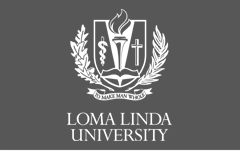Abstract
INTRODUCTION: Streptococcal toxic shock syndrome (STSS) is a rare disease that affects about 4 in 100,000 persons a year in resource rich countries. Despite increasing incidence, the factors responsible for this disease are not fully understood and diagnosis often remains elusive, leading to a mortality rate of around 60 percent. We describe a case of STSS in an elderly male, and the challenges associated with rapid diagnosis and appropriate treatment.
CASE REPORT: A 60 year old male with history of methamphetamine abuse and hip osteoarthritis presented to the emergency department with left hip and lower leg pain. Hip X-ray demonstrated degenerative disease and patient was discharged home with lidocaine patches. Patient returned to the emergency department the following day with confusion and worsening left lower leg pain.
His blood pressure was 80/40, white blood cell count 1.2, lactate 4.3, creatinine 4.55, procalcitonin 66.44, creatinine kinase 608, urinalysis without infection, and chest X-ray with mild vascular congestion.
He was intubated and started on intravenous fluids, vasopressors, and broad spectrum antibiotics for presumed septic shock. A clear infectious source could not be identified when two deep venous stasis ulcers on his left shin were noted (Figure 1). Left lower leg X-ray completed one day prior demonstrated no evidence of gas or bony destruction (Figure 2). Clindamycin was started, and general surgery consulted due to concern for necrotizing fasciitis.
General surgery found left leg wounds to be without fluctuance, discharge, odor, warmth, or tenderness and felt patient to not have a deep skin infection. Patient was, therefore, not taken for emergent surgical debridement.
Patient then rapidly deteriorated, and therapy was escalated to five vasopressor agents. Two blood cultures collected 11 hours prior grew streptococcus pyogenes. Patient, however, at this time was too unstable hemodynamically to undergo further imaging or surgical intervention. Less than 29 hours after initial presentation, patient was pronounced dead.
DISCUSSION: STTS is diagnosed when a patient has hypotension, multi-organ failure, and blood cultures growing streptococcus pyogenes. Treatment involves triple antibiotic coverage and early aggressive surgical intervention.
Because the disease spreads rapidly, an early diagnosis prior to blood culture results is imperative to reducing mortality. Clinical clues include shock without a clear etiology in an otherwise healthy individual, renal impairment, an elevated creatinine kinase level, and skin findings that are not classic for infection; as was the case with our patient.
We present this case to increase awareness among physicians in early recognition of this rapidly fatal disease, and the importance of advocating for early aggressive surgery, as every minute delayed exponentially increases mortality.
Recommended Citation
Patel, Pranjal
(2020)
"Streptococcal Toxic Shock Syndrome in a 60 year old healthy male: Challenges in Diagnosis and Management,"
Loma Linda University Student Journal: Vol. 4:
Iss.
1, Article 5.
Available at:
https://scholarsrepository.llu.edu/llu-student-journal/vol4/iss1/5

